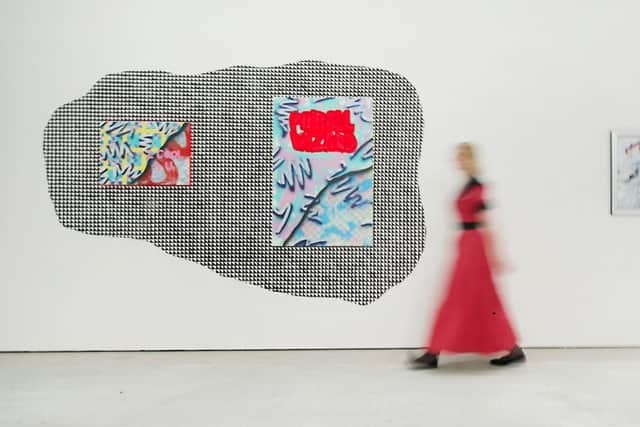Glasgow School of Art unveils ‘phoenix’ exhibition


More than a year on from the fire, which broke out during final preparations for the annual degree show, they have transformed five floors of the GSA’s new Reid Building, which opened just weeks before the incident, into a fine art gallery.
Work from 90 graduates - some of whom have returned to the city from all over the world - is going on public display on Friday as part of a “Phoenix Bursary” programme funded to the tune of £750,000 by the Scottish Government.
Advertisement
Hide AdFinal year fine art students who lost out on the traditional launchpad for their careers were offered 15 weeks studio time, an allowance towards their living expenses, up to 30 hours supervision by an academic tutor and a budget for materials to either replace lost work or create brand new art.
Some 21 institutions around the world helped support the programme, including Massachusetts College of Art and Design, the Pratt Institute in New York, the Mongolian State University of Arts and Culture, the Oslo National Academy of the Arts and the Willem de Kooning Academy in the Netherlands.
However around half of the graduates - who have produced painting, printmaking, video and sound works, photography, sculptures and live performance art for the exhibition - chose to stay in Glasgow, setting up a temporary base in a former whisky bond which had just been converted into artist’s studios.
An official investigation into the fire - which caught hold at lunchtime on 23 May last year - found it was triggered by flammable gases from a canister of expanding foam. They were set alight when they came into contact with the hot surface of a film projector in a studio being used by a student, who has never been identified.
The Scottish Fire and Rescue Service report also revealed that the rapid spread of the fire through the Charles Rennie Mackintosh-designed building, which dates back to 1909, was aided by the presence of original ventilation ducts and a large number of timber-lined walls. A new fire-prevention system was in the latter stages of completion and was not operational on the day.


Sam de Santis, a fine art photography graduate who has run the bursary programme, was the head of the GSA students’ association at the time of the blaze.
Advertisement
Hide AdHe said: “It was definitely panic stations. It was a weird, stressful and tiring few weeks, but ultimately it was bizarrely uplifting. There was a spirit of ‘let’s just do this.’
“The bursary scheme has gone way beyond what we thought it might be when we got the initial financial support just a couple of weeks after the fire. We wanted to help the graduates make a new body of work which could potentially culminate in an exhibition.
Advertisement
Hide Ad“You can’t overstate the importance of the degree show in terms of a platform. It’s been 14 months in the making to get to this point - it’s a big moment for all the graduates and the art school.”


Professor Tom Inns, the GSA’s director, who was appointed less than a year before the fire, said: “On the day after the fire there were so many things that needed to be worked out, but it was very clear we needed to do something with and for the students that were most affected to keep their trajectory going. Some of them lost four years of work.
“The programme has really helped support them to get back into their work. It would have been terrible if what happened last year had damaged this pool of creative talent.”
Swiss-born Andreas Behn-Eschenburg, 26, who was among those working in the art school when the fire broke out, said: “I was devastated at the time.
“It wasn’t just about losing a whole year’s work, it was more than that. We had spent four years in the building and it was such a big part of our lives - it was the most important place that we had.
“The bursary really allowed me to keep my practice going in a way I don’t think I would have been able to without it. I was able to make a lot of new work, go away to Boston for three months, make new contacts and learn new things.”
Advertisement
Hide AdKevin Boyd, 25, from Johnstone, in Renfrewshire, added: “It didn’t really sink in, to be honest. I don’t know if it has yet. It’s only when I look at the building I think that it is a shame what happened to the building. I’ve just kept myself busy and tried not to dwell on it.
“It’s good to finally get to this point and have the hustle and bustle of the degree show, even if it’s not the same thing.
Advertisement
Hide AdFirefighters received huge praise after managing to salvage 90 per cent of the Mackintosh Building and rescue around 70 per cent of its contents, including the “vast majority” of the art school’s archives.
Forensic archaeologists began a painstaking sift through the iconic building, including the remains of the library, in November. It later emerged that 90 oil paintings, including two by Mackintosh himself, and around 8000 books and journals had been lost in the fire.
The cost of the restoration - which is being overseen by Glasgow-based Page \ Park Architects - is expected to be up to £35 million, with a reopening of the “Mack” building not expected until the 2017-2018 academic year at the earliest.